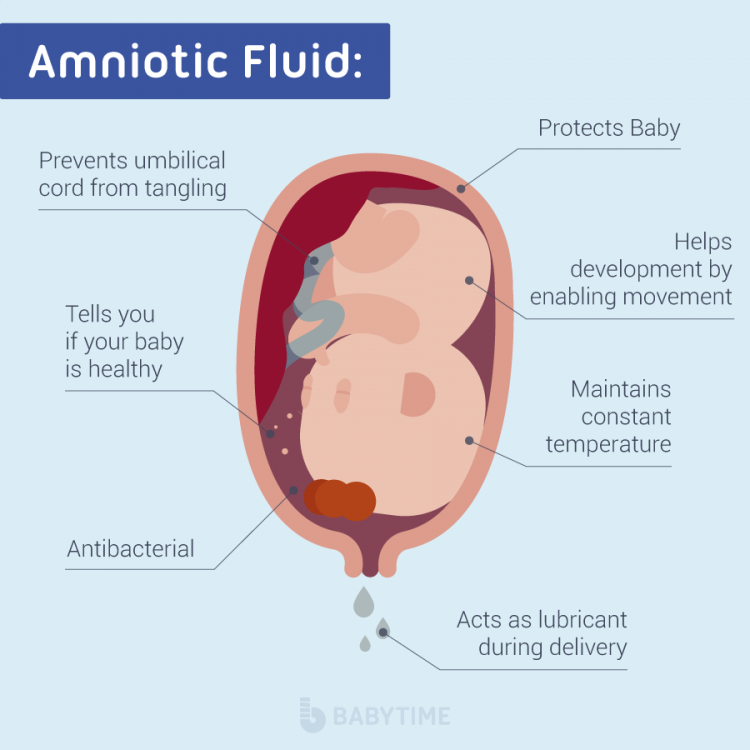


After birth, it helps remove the baby’s wastes.It can be a predictor of labor by measuring the decrease in the amount of fluid as labor approaches.It can be a diagnostic tool for specific congenital disabilities and problems with the baby’s development.It helps keep a stable internal environment in case of abrupt changes in the external environment, e.g., during a hurricane or other natural disasters when pregnant mothers have to be moved to a safe place in haste, without packing many things.Provides nutrients for fetal development.It prevents the umbilical cord from becoming compressed against the baby.Keeps harmful bacteria away from the baby.Provides an energy source for the fetus via carbohydrates, fats, and amino acids.Helps maintain the normal body temperature of the baby.Protects membranes from compression and puncture from abrupt movements of the fetus.Helps regulate a constant body temperature for the baby.It helps the lungs expand and develop properly before birth.Maintains a constant environment for the growing baby.It prevents infection of the fetus when exposed to the external environment.Protects growing baby from trauma during pregnancy.The water concentration in the fluid is higher than that in urine or blood plasma.Īmniotic fluid plays a vital role in a baby’s life during the gestation period. In addition, urine from the fetus also mixes with amniotic fluid. The fluid also contains urea produced from the breakdown of protein in the body, and it also contains minerals, vitamins, and other nutrients. It contains water, electrolytes, fat, protein, carbohydrates, vitamin, and minerals. It is typically clear and odorless, but it may taste slightly salty. This fluid provides nutrients for the baby while growing and developing before birth. It is white to yellowish and contains a lot of protein, minerals, and vitamins.

After birth, you’ll probably have only a few tablespoons of amniotic liquid left. However, when there isn’t much fluid left, it can cause problems for the baby. The amount of fluid in the uterus decreases by about 1/2 cup when a woman has early labor contractions. When labor begins, the baby’s head drops down into the pelvis and pushes the fluid out. The level usually decreases slowly as labor approaches. At the end of pregnancy, the average fluid level is about 30 cm (12 inches).


 0 kommentar(er)
0 kommentar(er)
